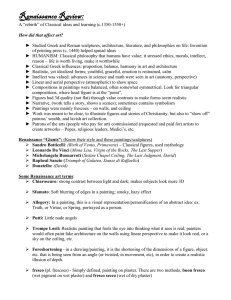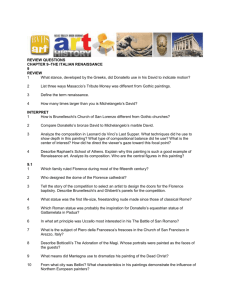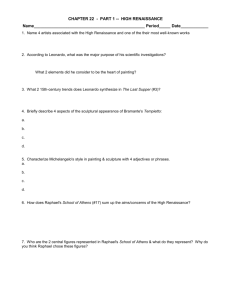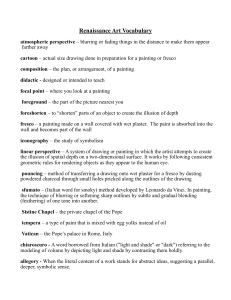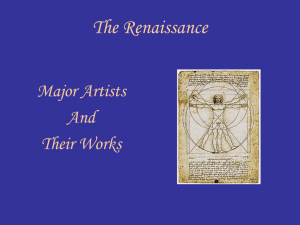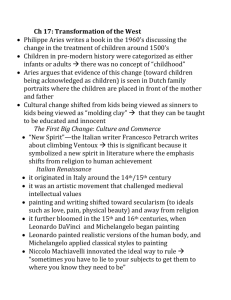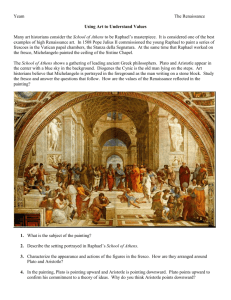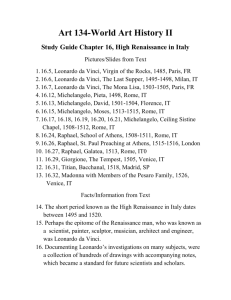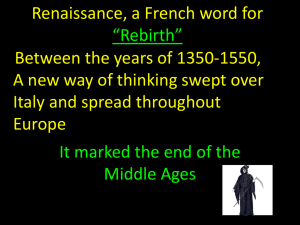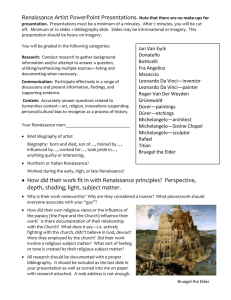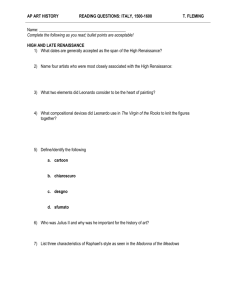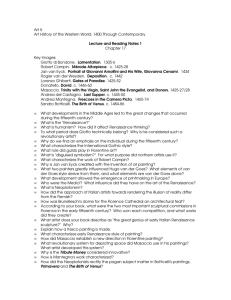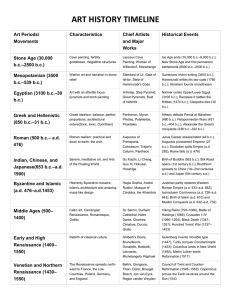NOTES - Artistic Renaissance in Italy
advertisement
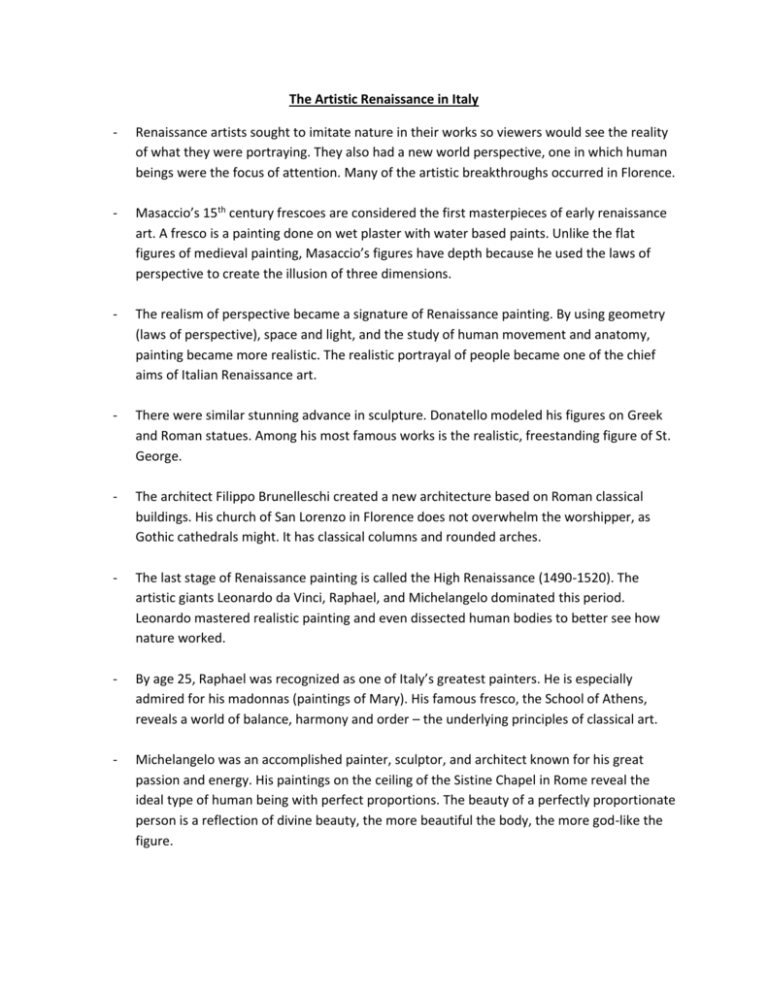
The Artistic Renaissance in Italy - Renaissance artists sought to imitate nature in their works so viewers would see the reality of what they were portraying. They also had a new world perspective, one in which human beings were the focus of attention. Many of the artistic breakthroughs occurred in Florence. - Masaccio’s 15th century frescoes are considered the first masterpieces of early renaissance art. A fresco is a painting done on wet plaster with water based paints. Unlike the flat figures of medieval painting, Masaccio’s figures have depth because he used the laws of perspective to create the illusion of three dimensions. - The realism of perspective became a signature of Renaissance painting. By using geometry (laws of perspective), space and light, and the study of human movement and anatomy, painting became more realistic. The realistic portrayal of people became one of the chief aims of Italian Renaissance art. - There were similar stunning advance in sculpture. Donatello modeled his figures on Greek and Roman statues. Among his most famous works is the realistic, freestanding figure of St. George. - The architect Filippo Brunelleschi created a new architecture based on Roman classical buildings. His church of San Lorenzo in Florence does not overwhelm the worshipper, as Gothic cathedrals might. It has classical columns and rounded arches. - The last stage of Renaissance painting is called the High Renaissance (1490-1520). The artistic giants Leonardo da Vinci, Raphael, and Michelangelo dominated this period. Leonardo mastered realistic painting and even dissected human bodies to better see how nature worked. - By age 25, Raphael was recognized as one of Italy’s greatest painters. He is especially admired for his madonnas (paintings of Mary). His famous fresco, the School of Athens, reveals a world of balance, harmony and order – the underlying principles of classical art. - Michelangelo was an accomplished painter, sculptor, and architect known for his great passion and energy. His paintings on the ceiling of the Sistine Chapel in Rome reveal the ideal type of human being with perfect proportions. The beauty of a perfectly proportionate person is a reflection of divine beauty, the more beautiful the body, the more god-like the figure.
